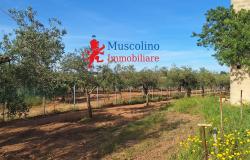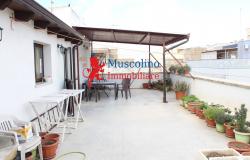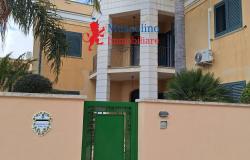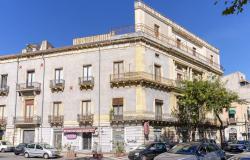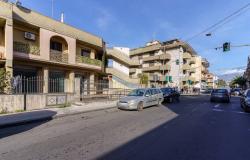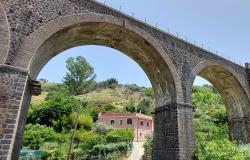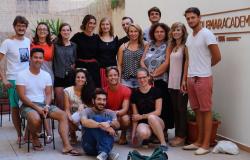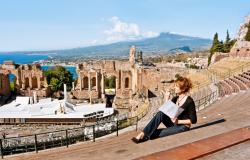Words by Pat Eggleton
Meet Gino Cannata - artist, countryman, cook, grandfather and one of the kindest men I know.
Gino, I first met you in 1992 but I know very little about your early life. Can you tell us a little about it?
I was born in Modica and was the first of five children. I had an older half-brother, too. My father was a farmer and I remember on Sunday mornings he would drive his donkey and cart into town and hire workers for the week from the town square, where they would gather after Mass.
What sort of education did you have?  At school I was a good boy. When I left school I trained as a primary school teacher and I did a social work course in Palermo. I went to Pisa University to do a course in foreign languages and literature but I didn’t finish it. In 1957 I had to start my military service and I did it in Rome and Orvieto.
At school I was a good boy. When I left school I trained as a primary school teacher and I did a social work course in Palermo. I went to Pisa University to do a course in foreign languages and literature but I didn’t finish it. In 1957 I had to start my military service and I did it in Rome and Orvieto.
What were your first jobs?
I worked for the National Student House in Rome. They ran short courses for foreign students. Then I got a job as Director of a Hotel School run by Enalc [Ente Nazionale Addestramento Lavoratori del Commercio] in Ostia [Rome]. It was a hotel school attached to a luxury hotel where the students could put into practice what they had learned. I had no specific training for this job but I was willing. It was an exciting time in Rome. I was there for the 1960 Olympics and I met the singer Mina. This was the period when she was singing with the Quartetto Cetra. And one special night Domenico Modugno sang for the hotel manager and me by the beautiful hotel swimming pool.
And then, I believe, you made a fateful trip to Britain?  Yes, I wanted to improve my English so I enrolled on a six-month English course in Stratford-Upon-Avon. I met my wife there and, as they say, “vissero contenti e felici!” [“They lived happily ever after”.] We lived in Britain for many years and had our children there. I worked in a British catering college in Stratford-Upon-Avon.
Yes, I wanted to improve my English so I enrolled on a six-month English course in Stratford-Upon-Avon. I met my wife there and, as they say, “vissero contenti e felici!” [“They lived happily ever after”.] We lived in Britain for many years and had our children there. I worked in a British catering college in Stratford-Upon-Avon.
Is it true that you served tea to the Queen there?
Yes, she came to the Royal Shakespeare Theatre and the College organised a tea. Everything was beautifully set out and the Queen was sitting at a table, smiling. It was my job to pass Her Majesty the lump sugar and, as I was serving it with the best silver sugar tongs, the lump jumped out of the tongs. Luckily, I saved the day by catching it in mid-air.
What happened next?
Eventually we came back to Italy and I worked in Spoleto [Umbria] Giarre and Siracusa [Sicily] before coming home to Modica. In Modica I worked hard to establish a hotel school. I’m happy to say that now it is flourishing.
What were “Mrs Gino’s” first impressions of Sicily?  Mrs Gino: All my new relatives and friends were so kind that I had no problems at all. I’ll always remember the day I picked my first lemon. I thought it was wonderful. Biblical parables came alive for me, being in the Mediterranean where I could see figs growing, for instance. And I felt close to the classical world.
Mrs Gino: All my new relatives and friends were so kind that I had no problems at all. I’ll always remember the day I picked my first lemon. I thought it was wonderful. Biblical parables came alive for me, being in the Mediterranean where I could see figs growing, for instance. And I felt close to the classical world.
I can identify with that feeling. Gino, you’re a bit of a cook, aren’t you?
I like cooking but I never follow a recipe. I use the ingredients that are to hand.
Mrs Gino: Gino’s cooking is colourful, like his paintings. He’s an instinctive, imaginative cook.
That brings us neatly to the paintings. Gino, did you paint as a child?
Well, I always drew. I was very proud of my six coloured pencils which I kept in a cardboard box with a picture by Giotto on it. I think an early influence was the way we made cribs. As you know, in Italy every house displays a crib at Christmas. We couldn’t afford to buy figurines for ours so we made them out of clay. We painted them with mulberry juice or the juice of the ivy fruit. We used to add wild asparagus fern to make an arch and we would put santini – the little cards with prayers on them that they give you in church – in the crib. We used cotton wool for snow and we would put oranges and mandarins around the crib. We were proud of this as not everyone had this fruit. I suppose it’s like the cooking – we used what we had.
And later?
I was always interested in art history and I painted when I could. I also drew to illustrate my lessons. When I retired from teaching, I started painting again in earnest.
How did you start?
I started by using coloured pencils, just like when I was a child. Then I went on to work with watercolours, oils and acrylic paints. Now I’m using pencils again, and charcoal. I use anything that’s to hand and I mix materials to make interesting textures. Sometimes I mix paint with gravel, for instance. For some paintings of Pozzallo I dipped my brushes in the sea water.
What do you paint on?
On tiles, wood, stone and slices of trees that have fallen off or been trimmed. My son in London sent me some recycled paper made from Indian cloth and I’ve also painted on papyrus from Siracusa. Again, I use what I have.
What are your favourite themes?
I don’t have any favourites. I’m inspired by what I like – people, animals, places – anything that gives me a special feeling. I do like painting people whose faces tell a story and I’ve given away over fifty pictures.
 Yes, you did a lovely picture of my Simi! Where do you paint and when?
Yes, you did a lovely picture of my Simi! Where do you paint and when?
In a corner of the sitting room. I don’t have a studio. I always have music on when I’m painting and usually I paint in the evening, till about 1 am. I also paint when the weather is bad or when it’s too hot to go out. I wear an old tracksuit.
You’ve held several private exhibitions, haven’t you?  Yes, for family and friends. We’ve held two at home and one at the Cava d’Ispica. Once we put all the portraits in a traditional stone cottage that’s in our garden. We called it the “National Portrait Gallery!” We put the religious paintings in a cave which, we think, used to be a tomb. You can see it under the house, to the left, in this picture.
Yes, for family and friends. We’ve held two at home and one at the Cava d’Ispica. Once we put all the portraits in a traditional stone cottage that’s in our garden. We called it the “National Portrait Gallery!” We put the religious paintings in a cave which, we think, used to be a tomb. You can see it under the house, to the left, in this picture.
What are you painting at the moment?
I bought some bent, black board cheaply and I’m painting a series of flowers on it. I want to capture the flowers at their best.
And you have a little Princess to paint these days?
Oh, yes, our granddaughter in Britain. I’m painting her from photos.
Happy painting, Gino. Thank you for talking to Italy Magazine and for sharing your paintings with us.
Gino’s friend, the architect and designer Nisveta, writes this of his paintings:
“Today, in a world which has forgotten the joy of life, these works are a gift, a beautiful light.”
You can see more of Gino’s paintings at the website of The Garden, Modica.

